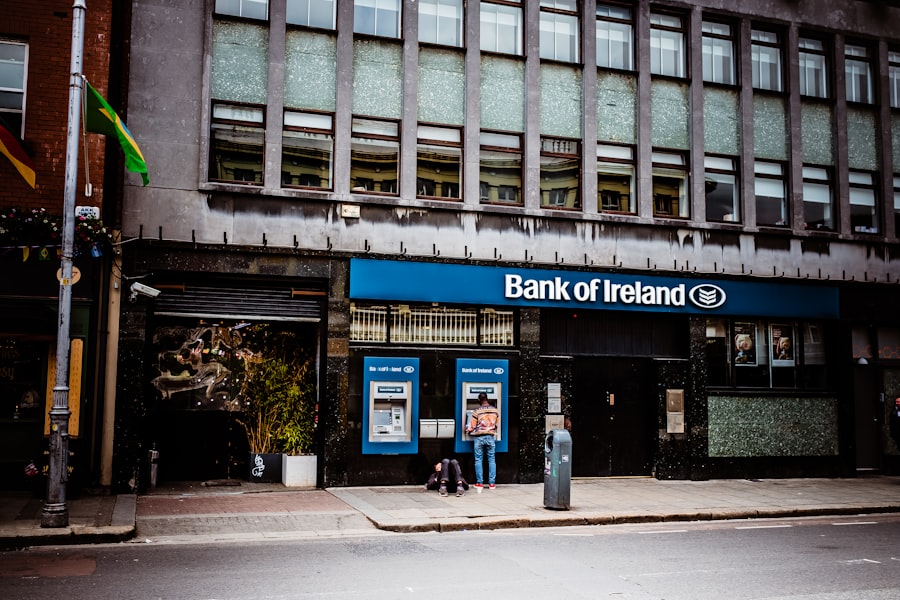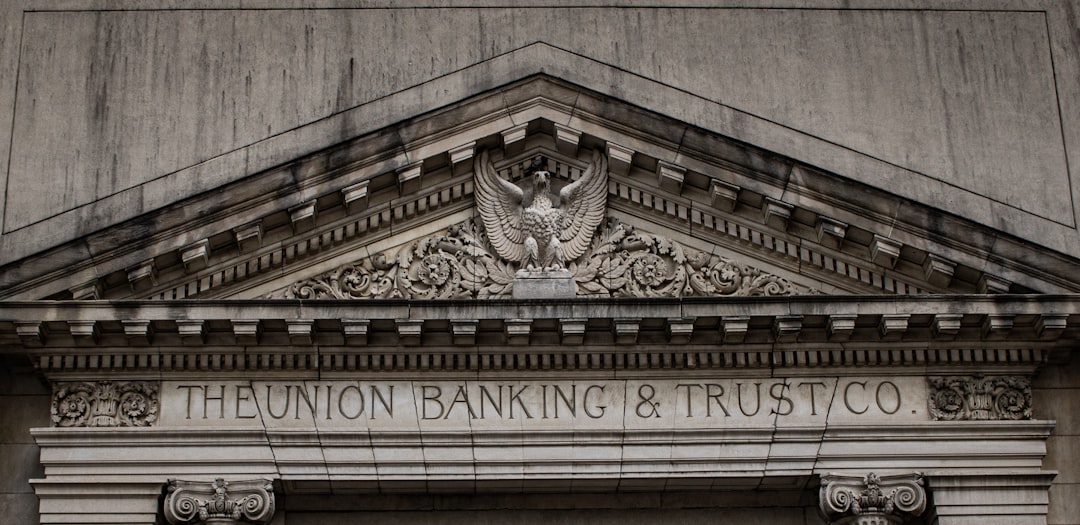A financial bank bail-in is a mechanism used to stabilize a failing financial institution by allowing it to use its own resources to absorb losses, rather than relying on external financial support. In essence, when a bank faces insolvency, a bail-in enables the institution to convert certain liabilities, such as deposits or bonds, into equity. This process helps to recapitalize the bank and restore its solvency without burdening taxpayers or requiring government intervention.
You might think of it as a way for banks to manage their own crises, ensuring that they can continue to operate while minimizing the impact on the broader economy. The concept of a bail-in emerged in response to the financial crises of the late 2000s, where taxpayer-funded bailouts became a contentious issue. Many argued that using public funds to rescue failing banks was unfair and could lead to moral hazard, where banks might take excessive risks knowing they would be saved by the government.
A bail-in shifts the responsibility of recovery onto the bank’s stakeholders, including shareholders and certain creditors, thereby promoting a more sustainable approach to financial stability.
Key Takeaways
- A financial bank bail-in is a process where a failing bank’s creditors and depositors are forced to bear some of the burden of the bank’s losses.
- The purpose of a bail-in is to prevent taxpayers from having to bail out failing banks and to ensure that the bank’s stakeholders share the burden of the losses.
- Bail-ins differ from bail-outs in that bail-ins require the bank’s creditors and depositors to bear the losses, while bail-outs involve using taxpayer money to rescue a failing bank.
- The legal basis for bail-ins is typically established through legislation and regulatory frameworks that outline the process and requirements for implementing a bail-in.
- Regulators play a key role in overseeing and implementing bail-ins, ensuring that they are carried out in accordance with the established legal framework and in a way that minimizes disruption to the financial system.
The Purpose of a Bail-In
The primary purpose of a bail-in is to protect the financial system from systemic risks while ensuring that the burden of bank failures does not fall on taxpayers. By allowing banks to utilize their own resources to address insolvency, bail-ins aim to maintain public confidence in the banking system. You may find it reassuring to know that this approach seeks to minimize disruptions in the economy and prevent panic among depositors and investors.
Moreover, bail-ins serve as a deterrent against reckless banking practices. When stakeholders understand that they may bear the consequences of a bank’s failure, they are more likely to advocate for prudent risk management and sound financial practices. This shift in accountability can lead to a more resilient banking sector, where institutions are incentivized to operate responsibly and maintain adequate capital buffers.
How Bail-Ins Differ from Bail-Outs

Bail-ins and bail-outs represent two fundamentally different approaches to handling financial distress in banks. A bail-out typically involves government intervention, where public funds are used to rescue a failing institution. This can take the form of direct capital injections, loans, or guarantees.
In contrast, a bail-in relies on the bank’s own resources and the participation of its stakeholders to absorb losses and restore solvency. Understanding this distinction is crucial for grasping the implications of each approach. You might consider the moral hazard associated with bail-outs, where banks may engage in riskier behavior knowing that they will be rescued if things go awry.
Bail-ins, on the other hand, aim to align the interests of stakeholders with the long-term health of the institution. By placing the responsibility for recovery on those who have a vested interest in the bank’s performance, bail-ins encourage more prudent decision-making and foster a culture of accountability within the financial sector.
The Legal Basis for Bail-Ins
| Legal Basis for Bail-Ins | Definition | Key Metrics |
|---|---|---|
| Banking Regulation | The legal framework that allows for bail-ins to be implemented in the banking sector. | – Basel III requirements – Dodd-Frank Act – EU Bank Recovery and Resolution Directive |
| Bail-In Tools | Specific legal mechanisms that enable authorities to impose losses on a failing bank’s creditors. | – Debt write-downs – Debt conversion to equity – Creditor hierarchy |
| Regulatory Oversight | The role of regulatory bodies in overseeing the implementation and compliance of bail-in regulations. | – Financial Stability Board – Federal Reserve – European Central Bank |
The legal framework for implementing bail-ins varies by jurisdiction but generally involves specific regulations that empower authorities to take action during a bank’s distress. In many countries, legislation has been enacted to establish clear guidelines for how bail-ins should be conducted. For instance, the European Union introduced the Bank Recovery and Resolution Directive (BRRD), which provides a comprehensive legal basis for resolving failing banks through bail-ins.
They outline the hierarchy of claims, determining which stakeholders will be affected during a bail-in. This legal clarity helps ensure that the process is transparent and predictable, reducing uncertainty for all parties involved.
The Role of Regulators in Bail-Ins
Regulators play a critical role in overseeing the implementation of bail-ins and ensuring that they are executed effectively. You may find it interesting that regulatory bodies are responsible for monitoring banks’ financial health and intervening when necessary. They assess whether a bank is at risk of failure and determine if a bail-in is warranted.
This proactive approach helps maintain stability within the financial system. Additionally, regulators are tasked with establishing guidelines for how bail-ins should be conducted. They set forth rules regarding which liabilities can be converted into equity and how losses will be distributed among stakeholders.
By providing clear regulatory frameworks, authorities can help instill confidence in the banking system and reassure depositors that their interests are being safeguarded.
Understanding the Impact of Bail-Ins on Depositors

For depositors, understanding how bail-ins work is essential for assessing their potential risks. In many cases, insured deposits—those below a certain threshold—are protected from being converted into equity during a bail-in. However, you should be aware that deposits exceeding this insured limit may be subject to loss or conversion if a bank undergoes a bail-in.
This reality can create anxiety among depositors who may worry about the safety of their funds. It’s crucial for you to stay informed about your bank’s financial health and understand your rights as a depositor. While bail-ins aim to protect the broader financial system, they also highlight the importance of choosing banks with strong capital positions and sound risk management practices.
The Potential Risks and Benefits of Bail-Ins
Bail-ins come with both risks and benefits that you should consider. On one hand, they can enhance financial stability by reducing reliance on taxpayer-funded bailouts and promoting responsible banking practices. By holding stakeholders accountable for losses, bail-ins encourage better risk management within financial institutions.
On the other hand, there are inherent risks associated with bail-ins that could affect you as a depositor or investor. The uncertainty surrounding how losses will be distributed can create anxiety among stakeholders. Additionally, if a significant number of banks were to experience distress simultaneously, it could lead to broader economic repercussions that impact your financial well-being.
How Bail-Ins Affect Shareholders and Bondholders
Bail-ins have significant implications for shareholders and bondholders as well. When a bank undergoes a bail-in, shareholders often face dilution of their ownership stakes as their equity is converted into new shares or written down entirely. This can lead to substantial losses for investors who may have believed their investments were secure.
Bondholders are also affected during a bail-in scenario. Depending on the structure of the bank’s liabilities, certain types of bonds may be converted into equity or written down as part of the resolution process. As an investor, you should be aware of these potential outcomes when considering investments in financial institutions, as they can significantly impact your portfolio’s performance.
The Global Perspective on Financial Bank Bail-Ins
Globally, the adoption of bail-in mechanisms has gained traction as countries seek to enhance their financial stability frameworks. You may notice that various jurisdictions have implemented their own versions of bail-in regulations in response to lessons learned from past financial crises. For instance, Australia has established its own framework for managing bank failures through bail-ins, while countries in Europe have adopted similar measures under the BRRD.
As you explore this topic further, consider how different countries are navigating their unique challenges while embracing the principles of bail-ins as a means of promoting resilience within their banking systems.
The Relationship Between Bail-Ins and Financial Stability
The relationship between bail-ins and financial stability is complex yet crucial for understanding modern banking practices. You might find it interesting that proponents argue that bail-ins contribute to greater stability by ensuring that banks can absorb losses without external assistance. This self-sufficiency can help prevent contagion effects that could destabilize entire economies.
However, critics raise concerns about potential unintended consequences associated with bail-ins. If stakeholders perceive that their investments are at risk during times of distress, it could lead to panic withdrawals or loss of confidence in the banking system as a whole. Striking a balance between accountability and maintaining public trust is essential for ensuring that bail-ins serve their intended purpose without undermining overall financial stability.
The Future of Financial Bank Bail-Ins
As you look toward the future of financial bank bail-ins, it’s clear that this mechanism will continue to evolve in response to changing economic conditions and regulatory landscapes. You may anticipate ongoing discussions about refining legal frameworks and enhancing transparency surrounding bail-in processes. As more countries adopt similar measures, there will likely be increased collaboration among regulators globally to share best practices and lessons learned.
Moreover, advancements in technology may play a role in shaping how bail-ins are implemented in the future. Digital banking and cryptocurrencies present new challenges and opportunities for regulators as they seek to adapt existing frameworks to address emerging risks. As you navigate this evolving landscape, staying informed about developments in banking regulations will be essential for understanding how bail-ins may impact your financial future.
In conclusion, financial bank bail-ins represent a significant shift in how we approach bank failures and systemic risk management within the financial sector. By understanding their purpose, implications, and potential risks and benefits, you can better navigate your own financial decisions while contributing to discussions about responsible banking practices in an increasingly complex world.
A financial bank bail-in is a mechanism used to recapitalize a failing bank by involving its creditors and depositors, rather than relying on external assistance such as government bailouts. This approach aims to stabilize the financial system by ensuring that the bank’s stakeholders bear some of the losses, thereby reducing the burden on taxpayers. For a deeper understanding of financial mechanisms and their implications, you might find the article on Real Lore and Order insightful, as it explores various financial concepts and their real-world applications.
WATCH THIS! The 8 Assets You OWN But the Government CONTROLS (Dollar Collapse Survival)
FAQs
What is a financial bank bail-in?
A financial bank bail-in is a rescue strategy used by a financially troubled bank in which the bank’s creditors and depositors are forced to take a loss on their holdings. This is done in order to recapitalize the bank and prevent it from collapsing.
How does a financial bank bail-in work?
In a financial bank bail-in, the bank’s creditors and depositors are required to convert their holdings into equity in the bank or take a loss on their investments. This is done to provide the bank with the necessary capital to continue operating and avoid insolvency.
What are the reasons for a financial bank bail-in?
A financial bank bail-in is typically used when a bank is facing financial distress and is at risk of insolvency. It is used as a way to recapitalize the bank and prevent it from collapsing, while also minimizing the need for taxpayer-funded bailouts.
What are the potential impacts of a financial bank bail-in?
A financial bank bail-in can have significant impacts on the bank’s creditors and depositors, who may experience losses on their investments. It can also impact the stability of the financial system and the confidence of investors and consumers in the banking sector.
Are financial bank bail-ins a common practice?
Financial bank bail-ins have become more common since the global financial crisis of 2008, as regulators and policymakers have sought to find alternatives to taxpayer-funded bailouts. However, they are still relatively rare and are typically used as a last resort to rescue a failing bank.
